|
Find a Farmer's Market near you for fresh and local produce and whole foods.
"Researchers at Yale and Oxford say exercise is more important to your mental health than your economic status. The scientists found that while people who exercise regularly tend to feel bad for 35 days a year, nonactive participants felt bad for 18 days more. The team also found that certain sports that involve socializing can have more of a positive effect on your mental health than others."
Read more at Business Insider. "Diet culture has made food and health a performance. Healing from diet culture and weight stigma means untangling from the performance and finding your way into a place where your needs, wants, desires and boundaries are louder than the externalized rules that demand adherence in exchange for worthiness."
From the Be Nourished Blog "What works with weight loss is if you choose water or a non-caloric beverage over a caloric beverage and/or eat a diet higher in water-rich foods that are healthier, more filling, and help you trim calorie intake," says Penn State researcher Barbara Rolls, PhD, author of The Volumetrics Weight Control Plan.
Food with high water content tends to look larger, its higher volume requires more chewing, and it is absorbed more slowly by the body, which helps you feel full. Water-rich foods include fruits, vegetables, broth-based soups, oatmeal, and beans. 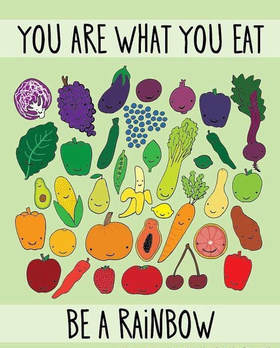 As any parent of a picky eater knows, getting children to eat for health can be a challenge. Check out Sharon McRae's tips for transitioning your little ones to a plant-based diet. 1. I explained to my three children why we were making the transition to a plant-strong diet. We watched the fabulous movie “Forks Over Knives” together. 2. We explored recipes from some amazing recipe books including “Engine 2 Diet” by Rip Esselstyn, “Unprocessed” by Chef AJ, and “Super Immunity” by Dr. Joel Fuhrman, among others, and I began experimenting with new foods with family input. 3. I found delicious substitutes for the kids’ favorite foods. We used Daiya “cheese” initially and later transitioned away from it. See our recipe for pizzas made with pizza-hummus. The kids say it’s the best pizza they’ve ever eaten! And see the recipes for raw brownies from Chef AJ and black bean brownies from Dr. Fuhrman which are all huge hits with the kids. 4. I encouraged my family to help with choosing recipes and with food preparation. 5. Our new kitchen tools include a huge salad bowl, a rice cooker to make big batches of grains for the week, a pressure cooker to quickly cook beans (some of which otherwise take 45 minutes to boil), and for a big batch of some type of bean vegetable soup. A blender makes quick, delicious salad dressings, sauces & smoothies, and a food processor makes bean spreads and nut butters for sandwiches and snacks. 6. Our motto: Be prepared and plan ahead. Having grains, beans and veggies on hand allows me to throw together a meal in minutes. We always have hummus or another bean dip, nut butters, and plenty of fruits and vegetables in the fridge. We never travel without snacks like fresh or dried fruits, kale chips, hummus and sprouted grain bread, carrot and celery sticks, so we are never caught hungry without plant-strong, unprocessed options. 7. I shared plant-strong recipes with the kids’ friends when they were here for play dates, everything from kale to black beans, and shared the recipes with their parents. It was good for my kids to be able to share healthy foods with their friends, and that they taste great for everyone! When extended family is over, exclusively plant-strong meals are popular with everyone. 8. I began sending the kids to parties with a plant-strong dish to share for everyone. I call or email the host/hostess in advance and explain that we do not eat animal-based products, including dairy, and I offer to send the kids with a dish. Almost every time, the dish is a huge hit and the host/hostess asks for the recipe!  Mindfulness helps us put some space between ourselves and our reactions, breaking down our conditioned responses. Follow the steps below to begin your own mindfulness practice: 1. Set aside some time. You don’t need a meditation cushion or bench, or any sort of special equipment to access your mindfulness skills—but you do need to set aside some time and space. 2. Observe the present moment as it is. The aim of mindfulness is not quieting the mind, or attempting to achieve a state of eternal calm. The goal is simple: we’re aiming to pay attention to the present moment, without judgement. Easier said than done, we know. 3. Let your judgments roll by. When we notice judgements arise during our practice, we can make a mental note of them, and let them pass. 4. Return to observing the present moment as it is. Our minds often get carried away in thought. That’s why mindfulness is the practice of returning, again and again, to the present moment. 5. Be kind to your wandering mind. Don’t judge yourself for whatever thoughts crop up, just practice recognizing when your mind has wandered off, and gently bring it back. That’s the practice. It’s often been said that it’s very simple, but it’s not necessarily easy. The work is to just keep doing it, slowing impacting the way you think to attain greater peace.  Thank you to everyone that joined us for yoga today. Below are the class readings shared related to pursuing wholeness and authenticity to improve quality of life. "There is a little voice in all of us that is just a whisper. A tiny whisper. When you go into nature, into the wilds, especially alone, the whisper can come out and talk more. When you are in the city, you always have a list of things to do and think about. You can’t listen to the whisper. But when you are outside, you have much less to distract you. Inside each of us is the spirit that whispers. This little voice is our true self. If we can listen, it will start to get louder. Eventually, that whisper will be our normal voice. That’s when I really live. That is when dreams become reality. When I live from that deep intuitive place." From Walden by Henry David Thoreau The Spirit of Wholism "Just as we need to claim our wholeness and right relationship with ourselves a physical, mental, and spiritual beings, we also need to claim our rightful place in the world as a unique part of a greater whole. This awareness is all but lost in modern technological life. Once our ancestors lived in tune with Nature. They knew who they were because they recognized their intimate relationship to the big, consistent cycles that brought seed in Spring, growth in Summer, bounty in Fall. We Westerners, however, live as though we can conquer and dominate Nature with no detrimental effects. Our technological prowess has led us to believe that we are in no way dependent upon or connected with the great cycles of birth and growth by which our ancestors lived and died. But we are part of Nature, and Nature lives within us. We cannot prosper and remain separate from the natural world, for to do so is to remain severed from our own true natures. If we are to claim our power to heal, we must reclaim our awareness of ‘whole-ism.’ As these fundamental changes in awareness filter down through our lives, we begin to change the way we think. As we become whole, we will begin to question many of our previous assumptions. Just as we must acknowledge our need to be good stewards of our physical life-force, we cannot ignore the effect of our emotional life on our health. We can’t expect to be healthy in body, mind, and spirit if we don’t pay attention to each of them. We must give our bodies good fuel and regular exercise. We maintain our mental health by exercising (in other words, acknowledging and releasing) our emotions, and stimulating our minds. We nurture our spirits with music, meditation, or spiritual practice. However we choose to live our lives, we cannot remind ourselves often enough that these three elements - body, mind, and spirit - are inseparable elements of the whole human being." From Maximum Healing: Your East-West Guide to Natural Health by Mark Dana Mincolla, Ph.D. As Geneen Roth explains in her book Women Food and God, "In an April 2007 UCLA study of the effectivness of dieting, reseachers found that one of the best predictors of weight gain was having lost weight on a diet at some point during the years before the study started. Among those who were followed for fewer than two years, 83 percent gained back more weight than they had lost. Another study found that people who went on diets were worse off than people who didn't.
Failing is built into the weight game. There is no way to play it and win. [To be healthy, we need to move beyond being] brainwashed by a sixty-billion-dollar-a-year diet industry." At Thrive Wellness Coaching we support lasting lifestyle change by working with clients to establish permenant healthy habits; no diets allowed! Learn about our personal coaching services and leave the dieting yo-yo cycles behind on your path to sutainable healthy living. 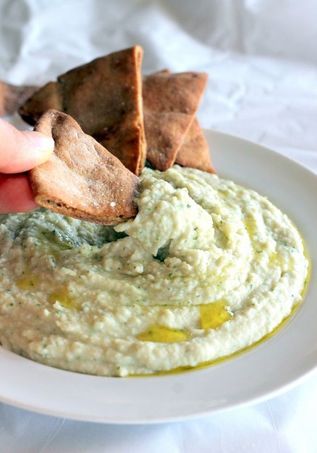 Ingredients 2 cups fresh white beans (cranberry or cannellini) 2 large cloves garlic, sliced in half 1 small onion, chopped 1/2 tsp. herbes de Provence Juice of 1 lemon Zest of 1 lemon 1 tsp. salt 1 Tbs. olive oil 1 Tbs. fresh parsley, chopped Directions 1. Bring beans, garlic, onion, and herbs de Provence to a boil in 4 cups water. Reduce heat and let simmer until beans are tender, approximately 30 minutes. Remove from heat, drain, and cool. 2. In a food processor, add bean mixture, lemon, zest, 1 Tbs. water, and salt. Pulse until smooth. Scrape purée into a bowl, add olive oil and parsley, and gently stir to incorporate. Season with pepper and more salt, if desired, and serve.  Shiva Rea has been practicing yoga since the tender age of 14, and is one of the leading yoga instructors of our times. First driven to explore the enlightening world of yoga to understand her birth name, Shiva’s goals have since progressed to include sharing her knowledge with any and all comers. Shiva believes that yoga enables everyone to realize their true potential. She focuses on Vinyasa (roughly translated, “breath-synchronized movement”), and enjoys worldwide fame as a teacher of Prana Flow Yoga and Yoga Trance Dance. Shiva Rea’s expertise in the Krishnamacharya lineage of yoga as well as Tantra, Ayurveda, Bhakti, Kalaripayattu, world dance, somatic arts, and yogic arts has led her to be invited to many important conferences and festivals in the yoga world, including Chant 4 Change, Yoga Journal Conferences, the Telluride Yoga Festival and special events at Kripalu and Omego. She has participated in pro-environmental events, and led retreats and pilgramages all over the world. During these retreats, Shiva helps students experience transformational yoga, healing, and sacred sanctuaries to supplement and freshen their yoga knowledge. Her teacher training programs merge Tantra, Yoga, and Ayurveda to prepare teachers for meditation, advanced asanas, and service in the world. Shiva’s fame extends to the world of media as well. She has been featured in a variety of yoga and fitness publications, and produced award-winning yoga DVDs and CDs. These products have helped revolutionize the in-home practice of yoga. Shiva Rea’s unique blend of traditional and revolutionary yoga, fitness, and music has enabled her to attract both novice as well as long time practitioners. Shiva Rea currently lives in Pacific Palisades, California.  Politics block accurate health info from reaching the public because of money. Americans are very confused about what type of food they should eat and its no wonder since the media is flooded with contradictory and reductionist health and nutrition information. This is an issue created by the way collusive capitalism allows the tremendous influence of the industrial food industry, the diet industry and the pharmaceutical industry to influence food policy and medical education. Why is this so? Frankly, there is no money in the simple message that a whole-foods plant-based lifestyle and physical activity lead to health. Also, in the decade of post-grad medical education doctors receive, most physicians are only exposed to a few hours of nutritional science. Mush of their education, and the education for nutritionists and registered dietitians, is funded and/or facilitated by the food and pharmaceutical industries. Perhaps to best understand the situation, lets consider what money is LOST to these industries when an American is healthy.
The food industry, which devotes vast sums of money to advertising, lobbying and political contributions, wants everyone to believe exercise is the key to health and weight maintenance. Because of this influence, our collusive federal government has adopted the food industries party line asserting that “all foods fit” and exercise is the primary avenue to attain health. This bias is regurgitated into national food guidelines and school lunch programs. Dr. Richard Carmona, former surgeon general during the Bush administration has even testified before Congress that bureaucrats routinely silenced him against speaking out against obesity. Thank you to everyone that joined us for yoga today. Check out this fabulous infographic describing the benefits of cultivating a regular practice both in the short and longterm. Namaste!
 The kind of food we eat is the food that is most profitable. The profit margins for soda are 90%. The profit margins for produce are 10%. Fresh fruits and vegetables comprise only 2% annual U.S. food sales. Toxic food is cheap and good food is comparatively very expensive, as it is not artificially subsidized by the federal government. People with the least amount of money eat the most calories in our society because we have created a system where the most calories are the cheapest. Most processed foods are man made concentrations of sugar, fat and salt that contain way more calories than any food found in the natural world. These foods can easily contribute to a diet so high in calories, burning them off in a single day is actually impossible. With soda, the body has a hard time recognizing liquid calories. The worst part of these foods is that they are also addictive - foods high in fat and sugar provide the release of opioids in the brain. Nature delivers whole foods as nutrient complexes on purpose, not concentrated isolates like high fructose corn syrup that wreak havoc on our blood sugar control mechanisms. Because many people fail to see the correlation between quality nutrient dense foods and good health, they cannot justify the investment of money and time to buy and prepare the foods we need. Cooking in the home – the best single thing you can do to improve your health – is not commonplace or valued in our society. Quantity has become the most important measure of food quality but as long as you are starving on a nutritional basis, you will remain hungry regardless of the amount of calories you consume. People tend to eat based on the amount served to them on a plate and restaurant portions are 5-7 times the amount of food we need. We need a paradigm shift to value eating for nutrients, not calories. In America’s toxic food environment, only 1 in 3 people can maintain a healthy weight. Regional differences are different shades of terrible. A child born in 2000 has a 1 in 3 chance of being obese. If that child is of color the chance in 1 in 2. In America, less than 1% of citizens qualify for the 7 factors of ideal cardiovascular health. 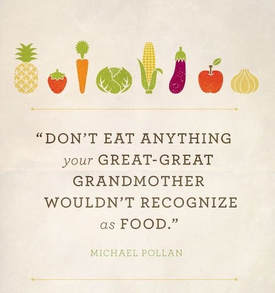 In Clean Food, Terry Walters explains the differences between what we now eat and our Grandparents' food supply by stating “their food supply was not as adulterated as ours is today and likely did not travel as far or as long to get from the farm to the grocery store to the table. They did not eat processed or fast foods. Their meals were balanced and prepared fresh daily. Fields were not sprayed with herbicides and pesticides to the extent that they had to be unfarmed for entire growing seasons in order to be brought back to life. Animals and fish were not fed steroids, growth hormones, antibiotics and pesticide-laden foods. Produce was not genetically engineered or grown with pesticides so that it could be harvested at reduced cost and increased productivity; nor was it picked and then shipped across the country, tossed around in cases, placed on grocery shelves and intended to appear unblemished and freshly picked weeks later.” Our industrialized food system has been a major contributor to the obesity crisis in this country, which now costs $190 billion annually in treatment costs alone. According to United States Department of Agriculture data, the average American now consumes 600 more calories per day than in 1970. Most come from the added fats, sugars and refined grains commonly found in highly processed foods and junk foods—soda, frozen pizza, donuts and scones, burgers and fries, and the like. These additional calories have overwhelmingly come from corn (corn starches, corn syrup, high fructose corn syrup, feed corn fed to livestock), soybeans (soy proteins, vegetable oils, salad oils, partially hydrogenated oils, and fryer oils in fast-food restaurants) and wheat (refined flour). These three crops account for the vast majority of crop acreage planted in the United States.  In the last 75 years we have industrialized our food system based on commodities. If you look around the supermarket, there is the illusion of food diversity and choice, but really, almost all packaged foods are clever rearrangements of our commodity crops: corn, soy and/or wheat. In “Our Unhealthy Food System,” David Wallinga, M.D., M.P.A. explains, “When talking about our [industrial] food system, we are referring to everything from the farm to the plate—food production, harvesting, processing, marketing and distribution. Industrialization describes the increasing tendency of economists, policymakers and agribusiness companies to treat farms as rural factories, with off-farm inputs (energy, antibiotics, synthetic fertilizers, genetically modified seed) marshaled in the service of producing caloric energy (feed corn and starches, soybeans and refined flour). Industrialization also describes a system in which economic return is paramount—more important than concern for the public’s health, the potential health effects of pesticide exposure, the long-term resilience of the land where crops are grown, and the methods by which food is processed and delivered.” We are so excited to be starting a new yoga winter session January 14, featuring two class times every Sunday at Ways to Wellness. Full class details are below; I hope you can join us! 10-11a Sundays | All-Level Vinyasa Flow Noon-1p Sundays | Beginner Yoga Location: Ways to Wellness (formally Raindrop Yoga) 9 White's Bridge Rd, Windham Class cost: $12 ALL-LEVEL VINYASA FLOW Every Sunday from 10-11a join me for All-Level Vinyasa Flow, providing a welcoming and inclusive environment for all mobility levels. This class offers a unified flow featuring many modifications throughout to offer beginner, intermediate and advanced tracks within the same yoga practice. This way the flow is appealing to both students new to yoga and seasoned yogis alike. I will also employ music and yoga philosophy class themes, such as being present, non-attachment, self-care, Ayurveda, etc., via quotes and readings weaved into classes to teach students about the other seven limbs of yoga, beyond just asanas. This approach tends to both the mind and body in a single class, offering students exposure to mindfulness and stress reduction techniques. To me personally, yoga is a way to focus on constant evolution and growth with regard to my self-care, and I hope to pass that philosophy onto students. Since class is offered at the Sunday morning timeframe, and appeals to all levels, this is a great one to attend with friends and family members. BEGINNER YOGA I believe that yoga is for everyone and every type of body so I am so excited to start teaching a weekly Beginner Yoga class every Sunday from noon to 1p. Beginner Yoga is taught assuming students could be walking into their very first class, or just getting back to regular movement. It therefore fuses gentle yoga poses, stretching, Restorative poses and many modification options. Classes also feature in-depth demonstrations to introduce poses, with both visual and audio cues, as well as content about what body parts and muscles poses hit. In this way I hope to covert a community of people new to yoga, impressing upon them the countless wellness benefits students reap with a regular practice. Class will also weave yoga philosophy throughout class that focuses on beginner dharma content to teach students about yoga beyond asanas. Such topics could include the meanings of common yoga terms such as Namaste and Om, the many health benefits of yoga, committing to a self-care practice, Chakras, and seasonal or emotional wellness themes. I often like to quote something I read, “you are new to yoga for the first ten years you practice,” because that really puts things into perspective with regard to the sheer scope of things we can learn and teach that are part of yoga. Beginner Yoga cultivates an environment free of intimidation, reinforcing that yoga can be highly variable to meet the needs of any student demographic. ABOUT YOUR YOGA TEACHER Katie Engels studied Vinyasa yoga with Chanel Luck at Radiant Yoga Boston to complete teacher training, and has been teaching yoga for two years. Katie’s yoga classes weave yoga philosophy and music along with asana (the physical practice of yoga), to cultivate a warm and welcoming atmosphere for new and seasoned yogis alike.  Why Does America Struggle with Such a Preventable Health Crisis? The answer is very complicated and most frustratingly, it has a lot more to do with our environment than failings or lack of willpower on the part of the individual. As many have observed, if you “go with the flow” in America, you will be overweight or obese. This does not mean, however, that individuals are powerless or that we should accept this with certainty as our assured fate. Education and wellness coaching can go a long way in empowering individuals to swim against the current towards better health and wellness. This blog post will explore some of the issues that tangle together to make healthy living in this country so elusive for the majority. The more you learn and know about the environment in which we need to make food, activity and ultimately health decisions each day, you more you realize weight issues and obesity can not be blamed on a failure of individual agency or willpower. We are not doomed, but understanding the issues described below is imperative for the individual to have a chance of navigating themselves and their families towards health. In America, health is the ultimate “knowledge is power” issue of our time. Our Very New Toxic Environment is at Odds with Our Evolution In the last 75 years, we have created a toxic environment in America that is incompatible with the way our body’s needs have evolved. Our modern world is characterized by excess energy reserves hard to avoid and this abundance of calories is evolutionarily new. For 4 million years humans have inhabited an environment of food scarcity so we are programed to eat as much as possible when calorie dense foods, such as meat, become available. This hardwiring allowed us to survive food insecurity, and even famine, but in our current landscape of overabundance, the instinct becomes disadvantageous. Food is now obsequious everywhere in America – we see it at gas stations and bookstores and vending machines are present at every school and workplace. This is another new development and it provides us with unrelenting external cues to eat. We are also designed to walk several miles a day in search of food, water, and firewood—as indigenous people do to this very day. Since our bodies depend on this activity to function properly, our new sedentary, indoor lifestyles cause chronic discomfort, pain and arthritic conditions for the 1 in 4 American adults that get no physical activity at all. Additionally, up until the very recent past, people lived and worked in dwellings without the consistent temperature control of central heating and air conditioning. That meant that many calories consumed in past generations where expanded to maintain the body’s internal temperature. These biological factors put us at odds with our new food supply, which has become completely industrialized during the same period of time. Stay tuned for upcoming blog posts that take a deeper dive into the health and wellness issues that arise as a consequence of our industrialized food system. Explore Wellness Coaching to Combat These Issues Learn more about developing your own personalized formula for heath and wellness to combat these issues by working with a Thrive Wellness Coach. Deep abdominal breathing encourages full oxygen exchange — that is, the beneficial trade of incoming oxygen for outgoing carbon dioxide. Not surprisingly, it can slow the heartbeat and lower or stabilize blood pressure.  Breath focus helps you concentrate on slow, deep breathing and aids you in disengaging from distracting thoughts and sensations. It's especially helpful if you tend to hold in your stomach.
First steps. Find a quiet, comfortable place to sit or lie down. First, take a normal breath. Then try a deep breath: Breathe in slowly through your nose, allowing your chest and lower belly to rise as you fill your lungs. Let your abdomen expand fully. Now breathe out slowly through your mouth (or your nose, if that feels more natural). Breath focus in practice. Once you've taken the steps above, you can move on to regular practice of controlled breathing. As you sit comfortably with your eyes closed, blend deep breathing with helpful imagery and perhaps a focus word or phrase that helps you relax. In a recent Forbes article, Noma Nazish breaks down why self-care is so important for wellness, and includes a list of simple ways to introduce more into your life. Work with a Thrive Wellness Coach to develop your own custom formula for health and wellness.
“No matter how indulgent or fancy the term may sound, self-care is crucial for our physical, emotional and mental well-being. You shouldn’t neglect self-care and here's why:
Click here to read the full article. |
Archives
January 2022
Categories
All
|



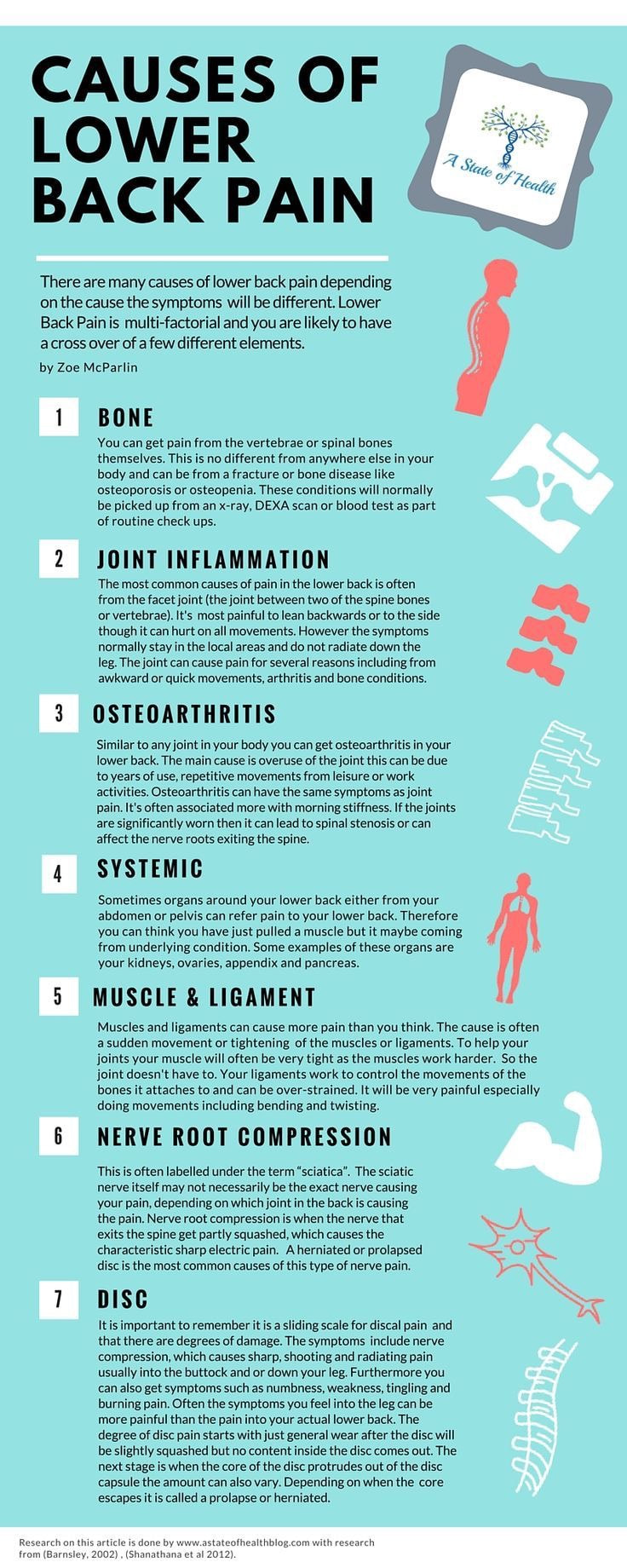
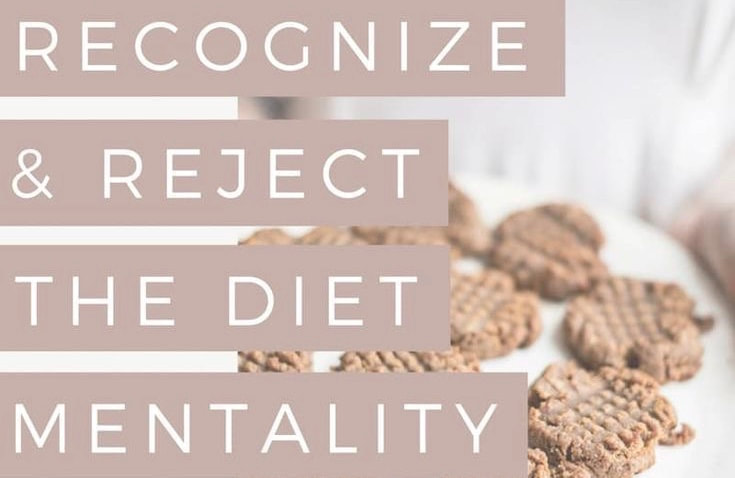


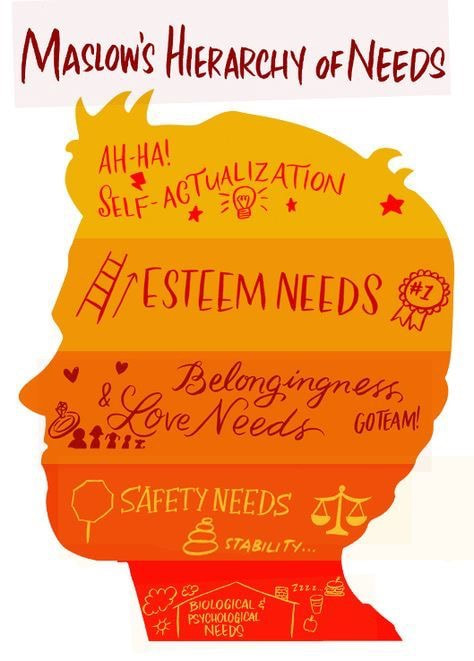


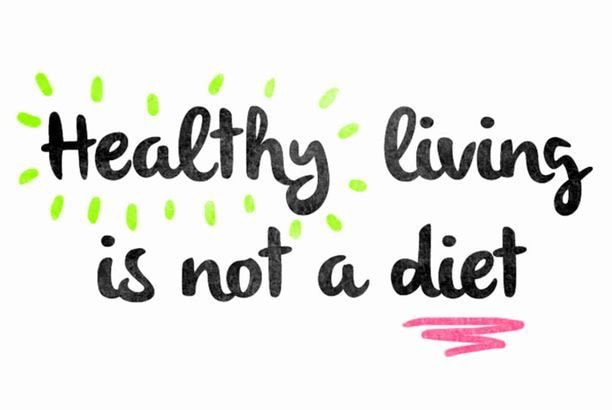
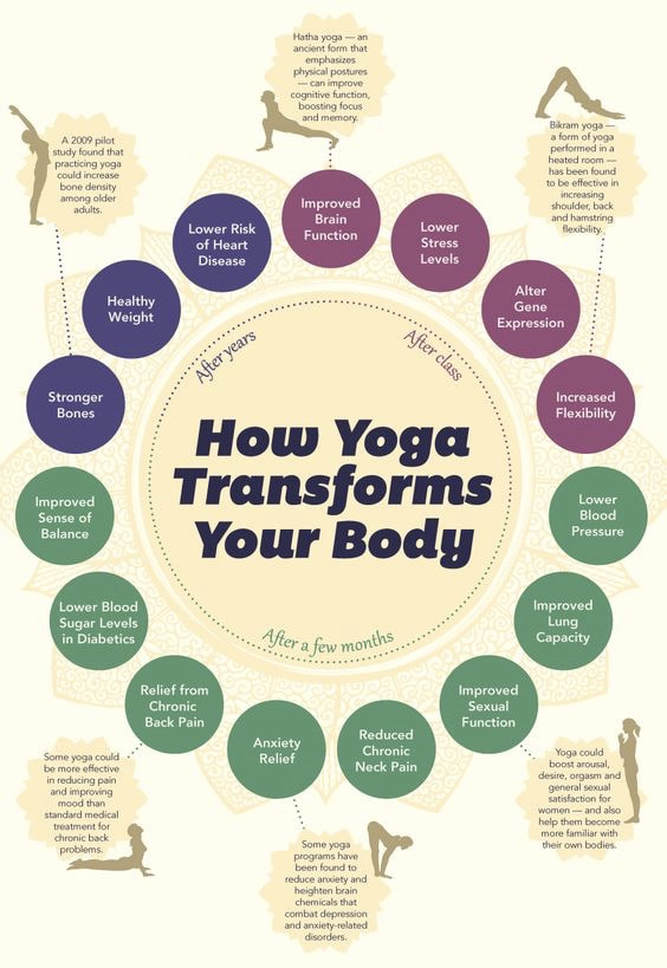

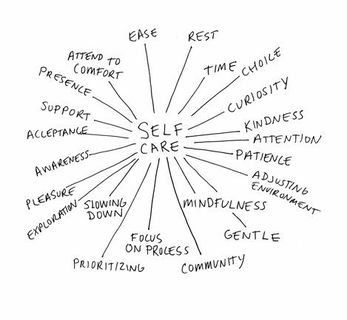
 RSS Feed
RSS Feed